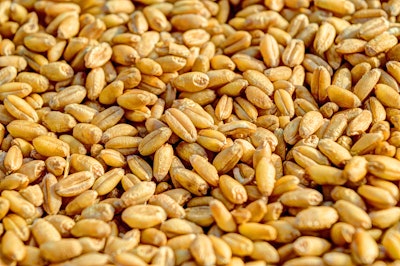
For all the logistics and market dynamics involved, selling grain to our customers overseas is a “seeing is believing” business not so different from selling seed, inputs or machinery to farmers here in the United States.
Just like farmers want to see what they will be getting when they put down their hard-earned cash and get to know the salesman who will be helping them make the buying decision, those purchasing our grains want to see the infrastructure and people behind the massive effort to get it across the ocean to them.
For more than 50 years, the U.S. Grains Council has made bringing customers to the U.S. Midwest to see crop fields, country elevators, barges, export terminals, ethanol plants and more a central part of its outreach. With the help of members across the country, we plan to host more than 25 of these teams this year alone, bringing alive the sights, smells and sounds of grain growing to feed cows, pigs, chickens and humans around the globe.
Marketing grain beyond our borders
The Council is charged with marketing commodities produced here at home, with our focus historically on feed grains — corn, barley and sorghum — and now including co-products of these crops like distiller’s dried grains with solubles (DDGS), ethanol, corn gluten feed and corn gluten meal.
Known as USDA “cooperators,” organizations like ours are non-profit and private organizations that receive grant funding from the Department’s Foreign Agricultural Service (FAS) for overseas marketing activities coupled with significant contributions from checkoffs and, in the Council’s case, members from the agribusiness value chain.
From our 10 overseas offices, we run outreach and education programs in more than 50 markets, providing initial introduction for new products to nutritionists, technical support for buyers and policy and association-building guidance to local feed grain and animal agriculture industries that want to expand and need critical infrastructure to do so.
While being on the ground is vital to our work, helping customers see the complexity and bounty of the U.S. agricultural system with their own eyes is also a crucial piece to increasing sales.
Teams that tour the United States — “trade teams” in our vernacular — are typically made up of four to 10 individuals from a country, region or industry who come as a group to learn about the logistics of the U.S. grain system. Each team’s agenda is tailored based on the Council’s strategic plan in their home market and goals in the current marketing year, this makes combinations as diverse as Japanese feed millers, Middle Eastern buyers or Peruvian poultry managers a regular part what we do.
These team journeys not only educate decision makers in export markets but also allow members of the U.S. industry to build personal relationships with their customers that can solidify long-term business and prompt new sales. In many instances, team members and the farmers or traders they visit choose to stay in touch long after or meet again when Council teams from the U.S. head overseas.
Importance of seeing it firsthand
A majority of USGC-sponsored trade teams coming here to the United States are composed of targeted buyers and end-users of coarse grains and their co-products. In addition, the Council often hosts teams made up of policy makers, government regulators and members of the media who need to better understand U.S. farming practices to effectively do their work back home.
Once they arrive in the United States, the trade teams have the opportunity to get a firsthand look at the quality, production and U.S. export system of our products. All of this happens through visits to grain and livestock farms, country elevators, river facilities, ethanol plants and export elevators. Participants also typically learn about modern farming practices, sustainability and the role of biotechnology.
These visits aim to highlight the progress and quality of U.S. grain crops and showcase investments made in technology by U.S. producers over the past several years that allow them to be more efficient in producing high-quality crops.
The farm visits give corn, barley or sorghum farmers the chance to explain the methods they use during harvest, drying and storage to preserve the quality of their grain, which helps to answer questions that arise back home when boats are unloaded and builds trust that the United States is reliable, long-term supplier of high-quality grains. They also allow customers to express first-hand any concerns about grain shipments they receive or the buying process.
By riding with farmers in their equipment, team participants learn they are real people who respect for the market and environment. By visiting both dry and wet corn mills, they learn the processes that distinguish corn gluten meal from DDGS. Watching containers being loaded helps educate them about measures in place to prevent mold, spoilage and contamination.
Training opportunities
The Council’s roots are firmly in market development activities that start with teaching local farmers how to better produce meat, milk and eggs, which, over time, will increase overall demand for grains and imports. Trade teams offer a unique opportunity to provide training and show best practices in operation here in the United States.
For instance, the Council helped China rapidly consolidate the country’s dairy industry, leading to large, modern dairies that have an increasing demand for coarse grains and their co-products. These large dairies require intensive management, and there is a shortage of management talent for these operations. We have addressed this by helping to form a training center in China but also bring teams of dairy managers to the United States regularly to view the latest U.S. technology and expand their thinking on what is possible for their dairy industry back home.
The Council tries to tie teams to special events when possible, like the World Dairy Expo, World Pork Expo or Export Sorghum, which was held earlier this year to promote sorghum sales specifically. Every other year, the Council and the Renewable Fuels Association (RFA) host Export Exchange, a unique convention that has as attendees members of up to 20 trade teams and U.S.-based grain traders, exporters and others in the industry. These events expand the typical trade team agenda to include significant networking time directly with those in the feed and food chain, bolstering relationships throughout the broader export system.
Building Customer and Member Relationships
Price is always a key to sales, but in dealing with commodities, many other factors matter as well. Issues like contract sanctity, load-out management, quality consistency and, of course, trust all come into play. In many of the Asian, Middle Eastern and South American markets that are most important to grain export growth, business is done both by the numbers and on the basis of personal relationships.
One of the core values of the Council is to develop strong partnerships and build global connections. As the trade teams travel throughout the United States they meet with farmers in their homes and agribusinesses members in their offices, often sharing meals and details about what life is really like here in the United States. These interactions build a sense of trust in the U.S. production and export systems. They are able to see and hear firsthand the pride that U.S. farmers have in their crops and the investments that they are making to provide a higher quality product to the export market.
While the Council’s headquarters and overseas offices devote significant staff resources to managing these programs, they simply couldn’t happen without strong partnerships with our members in farm communities. Customers like to see crops and facilities, but they most like to meet with the people who make these places run and keep high-quality grain coming their way year after year.
Members of trade teams also end up building another set of critical relationships while traveling in the U.S. — with one another. Often getting individuals who would otherwise barely know each other together for a week of travel proves to be enough of a bonding experience they end up working together in ways that benefit both them and us, sharing grain shipments or transferring a best practice.
Dividends over the years
We and our members are proud to sponsor trade teams every year and aim to communicate about them and their impact as much as possible in local communities and, these days, on social media.
Recently we have made efforts to ramp up our engagement with checkoff communicators to help them reach out to local reporters, meaning many readers of this publication might hear about a trade team from a local broadcaster or in the local paper.
With our members as partners, we also post photos from most trade teams at www.flickr.com/USGC and provide updates on Twitter (@USGC) and Facebook (@U.S. Grains Council). Our weekly newsletter offers a calendar of coming trade teams so those interested in catching up with one can plan ahead.
Agricultural products and the facilities that handle them are unique, subject to uncontrollable forces like weather and global market dynamics. With our members’ support, we strive to help our overseas customers see and understand what makes the U.S. grain production system world class and build relationships with them that grow through market cycles and ongoing development in their host countries.

















